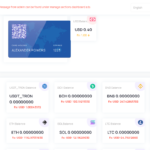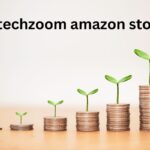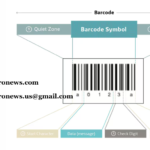Introduction
In the era of digital information, the quest for free resources has become a universal endeavor. The Vietnamese term “manguonmienphi,” translating to “free resources,” epitomizes this global interest in obtaining accessible information, tools, software, and various materials at no cost. This guide aims to explore the concept of manguonmienphi extensively, offering practical insights and reliable information to help you effectively navigate and utilize these free resources.
Understanding Manguonmienphi
What is Manguonmienphi?
Manguonmienphi refers to a vast array of online resources available at no cost. These include educational materials, software, multimedia content, and various online services. The availability of these resources at zero cost makes them accessible to a broad audience, fostering inclusivity and democratizing access to valuable information and tools.
Importance of Free Resources
Free resources play a critical role in today’s digital society. They enable equitable access to knowledge, support learning and innovation, and assist individuals and organizations with limited financial resources. Often, these free resources can rival their paid counterparts in terms of value, offering significant benefits without the associated costs.
Types of Free Resources Available Online
Educational Resources
E-books and Research Papers
Numerous platforms offer free access to e-books and research papers. Websites like Google Scholar, Project Gutenberg, and Open Library provide extensive collections covering a wide range of subjects, making them invaluable for students, researchers, and casual readers alike.
Online Courses and Tutorials
Educational platforms such as Coursera, edX, and Khan Academy offer free courses and tutorials across various disciplines. These resources cater to learners at all levels, from basic skills to advanced specializations, facilitating continuous learning and personal development.
Software and Tools
Open Source Software
Open source software is freely available and often maintained by a community of developers. Notable examples include the Linux operating system, GIMP for image editing, and LibreOffice for productivity tasks. These tools provide robust functionality and are excellent alternatives to paid software.
Free Trials and Freemium Models
Many software companies offer free trials or freemium versions of their products. These models allow users to access essential features without charge, with the option to upgrade for more advanced functionalities. Examples include Adobe’s suite of creative tools and various productivity apps.
Multimedia Content
Free Stock Photos and Videos
Websites like Unsplash, Pexels, and Pixabay offer high-quality stock photos and videos for free. These resources are particularly useful for content creators, marketers, and anyone needing professional multimedia content without the expense.
Music and Sound Effects
Platforms such as Free Music Archive and Freesound provide free music and sound effects. These resources are perfect for video editors, podcasters, and other multimedia projects, offering a wide variety of sounds to enhance creative works.
Services and Platforms
Cloud Storage
Some companies provide limited free cloud storage, which is ideal for individuals and small projects. Google Drive and Dropbox, for instance, offer a certain amount of free storage space, which can be expanded with a subscription if needed.
Web Hosting and Domain Services
Free web hosting and domain services are available through platforms like WordPress.com and InfinityFree. These options are suitable for personal websites and small-scale projects, providing essential hosting services without the associated costs.
How to Safely Access Free Resources
Verifying Legitimacy
When accessing free resources, it is crucial to verify their legitimacy. Seek reviews, user feedback, and recommendations from reputable sources to ensure that the resources are safe and reliable.
Avoiding Malware and Scams
Be cautious of malware and scams when downloading free resources. Stick to trusted websites and consider using antivirus software to protect your devices from potential threats. Additionally, avoid downloading from unknown sources that may compromise your security.
Utilizing Manguonmienphi Effectively
Integrating Free Resources into Daily Activities
Incorporating free resources into your daily activities can significantly enhance productivity and reduce costs. For instance, using free software for work tasks, accessing educational materials for personal development, or utilizing free multimedia content for creative projects can be highly beneficial.
Balancing Free and Paid Resources
While free resources are immensely valuable, there are situations where investing in paid versions may be necessary for more advanced features or dedicated support. Assess your specific needs and find a balance between free and paid resources to ensure you have access to the best tools for your requirements.
FAQs
How can I find reliable free resources online?
To find reliable free resources, start with well-known platforms and websites that offer user reviews and ratings. Additionally, look for recommendations from trusted sources and communities related to the specific resource you need. Using reputable websites can help ensure you access quality and safe resources.
Are free resources as good as paid ones?
In many cases, free resources can provide similar value to paid ones, especially for basic and intermediate needs. However, paid resources often come with advanced features, dedicated support, and other benefits that may be necessary for more demanding tasks or professional use.
What are the risks of using free resources?
The primary risks include exposure to malware, scams, and potentially unreliable content. Always verify the source of the free resource and use antivirus software to mitigate these risks. Being cautious and doing your research can help you safely benefit from free resources.
Can I use free resources for commercial purposes?
The ability to use free resources for commercial purposes depends on the specific terms and conditions of the resource. Some free resources are available for commercial use, while others may have restrictions. Always check the licensing agreements before using free resources in commercial projects.
How do open source software and free trials differ?
Open source software is typically developed by a community and is free to use, modify, and distribute. Free trials, on the other hand, are limited-time offers from companies allowing users to try their software before making a purchase. Open source software often has a broader scope of customization and community support, while free trials are usually restricted to a certain period or set of features.
What are some popular platforms for free educational resources?
Popular platforms for free educational resources include Coursera, edX, Khan Academy, and MIT OpenCourseWare. These platforms offer a wide range of courses and materials at no cost, making quality education accessible to a global audience.
Conclusion
Manguonmienphi, or free resources, are indispensable in today’s digital landscape. By understanding where to find these resources and how to use them safely and effectively, you can enhance your knowledge, productivity, and creativity without incurring additional costs. Embrace the wealth of free resources available online and make the most of these valuable tools and materials.
Read more article: usapronews.com



























































































